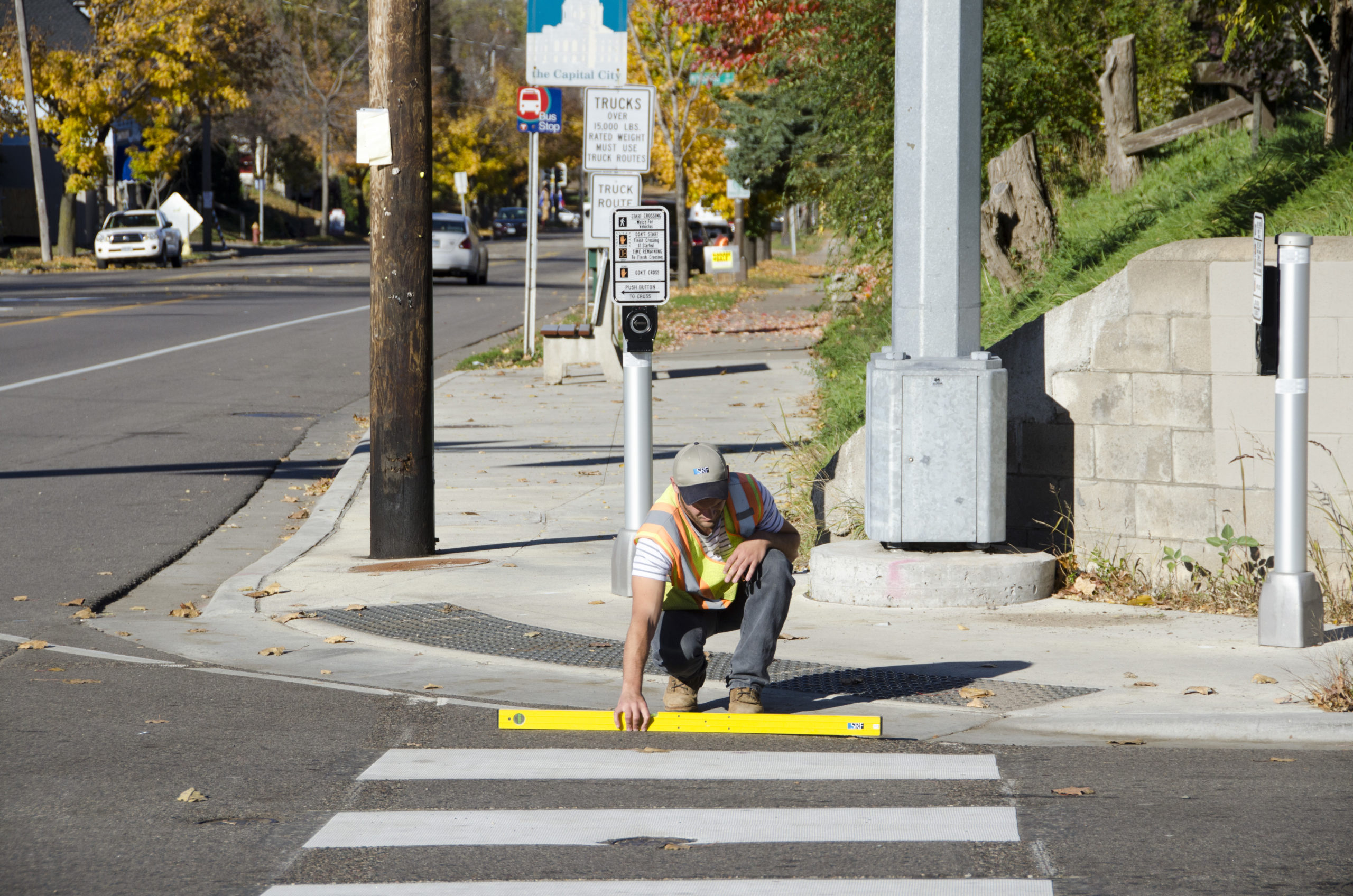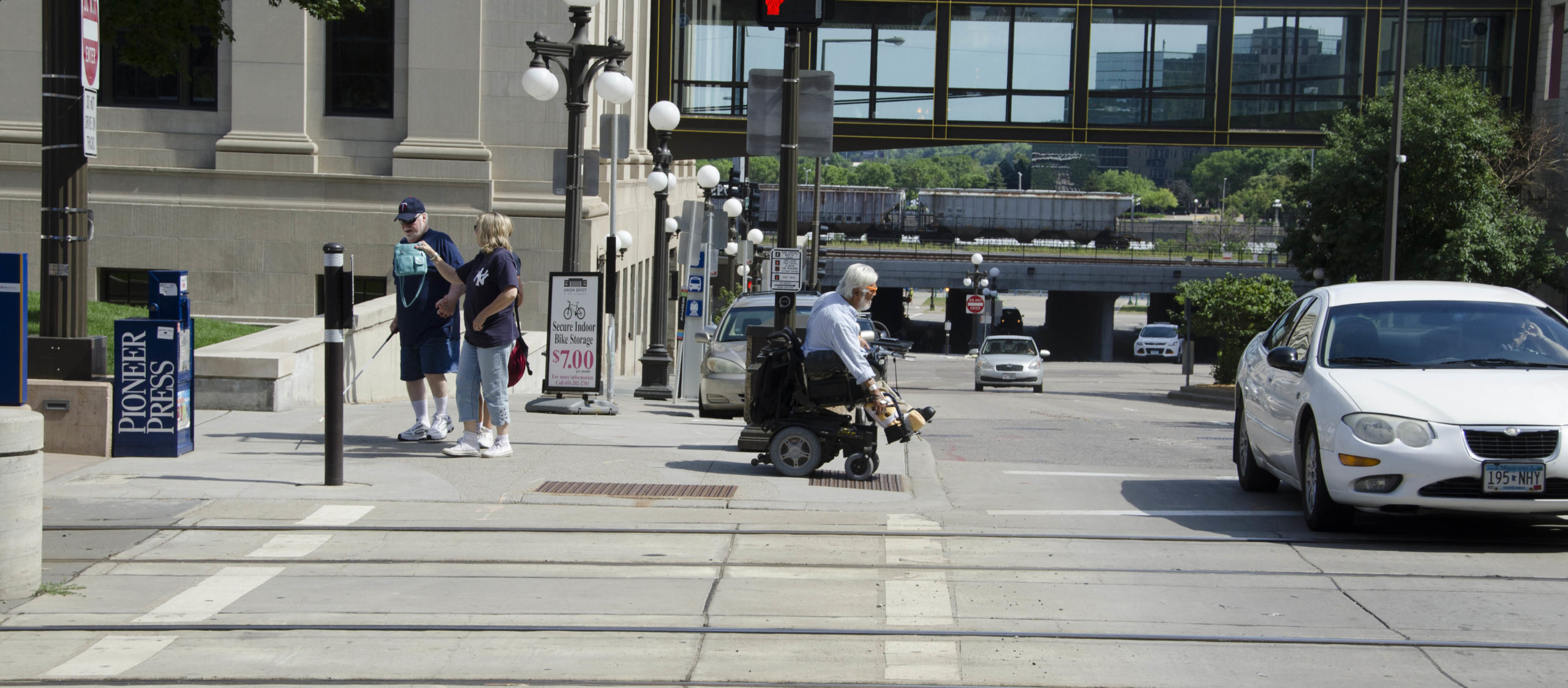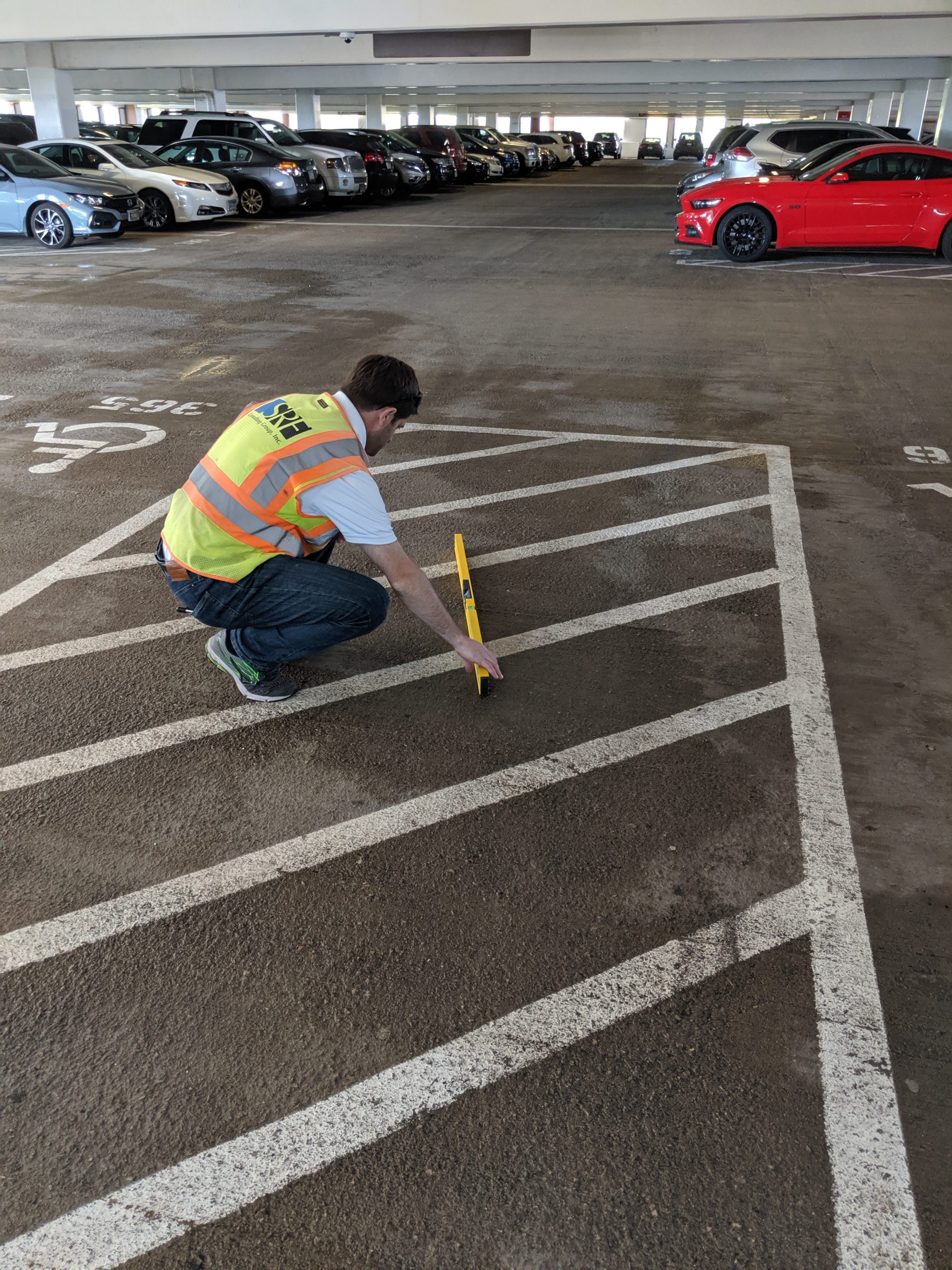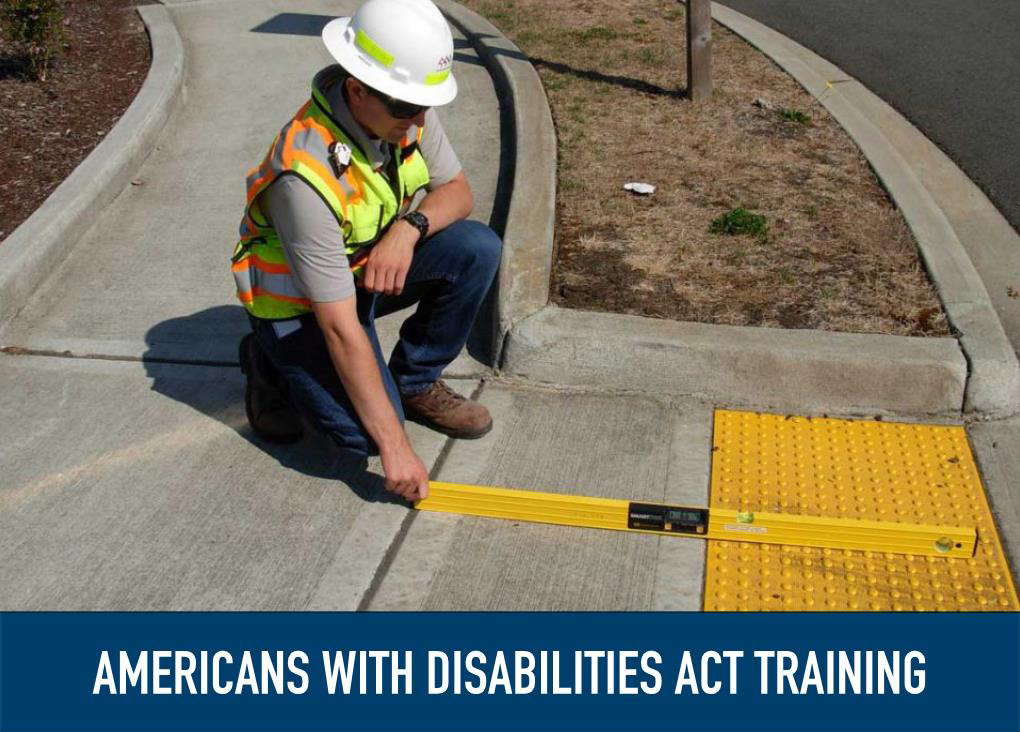ADA Self-Evaluations and Transition Plans: An Overview
While the American Disabilities Act was signed into law in 1990, July 26, 2021, marks the 30th anniversary of the Title II and Title III regulations being issued. In honor of this milestone, SRF is providing a quick guide to the self-evaluation and Transition Plan requirements for public agencies laid out in the ADA. Though the original deadline for these requirements is long past, funding pressure from the FHWA has resulted in a wave of public agencies fulfilling their obligations in recent years.
With the ADA’s 30-year anniversary upon us, now is a great time to prioritize accessibility.
What Is a Self-Evaluation?
An ADA self-evaluation is required of all public entities to identify barriers in programs and activities that prevent persons with disabilities from access. Every agency is required to evaluate all programs and facilities that require public access, including the public right of way (e.g., curb ramps, sidewalks, accessible pedestrian signals, transit stations), rest areas, parks, trails, and public buildings. The physical infrastructure must be evaluated with respect to relevant ADA standards. In addition, policies and communication must be in place to meet the demands of people with disabilities.
The end product is an inventory of facilities where structural modifications are needed to make them accessible. The exact format is not specified by ADA requirements, but it should provide enough information to form the starting point for the Transition Plan. The inventory may include:
- Aerial photographs
- Database/spreadsheets
- Marked-up drawings
- Geographic Information System (GIS) files and/or maps
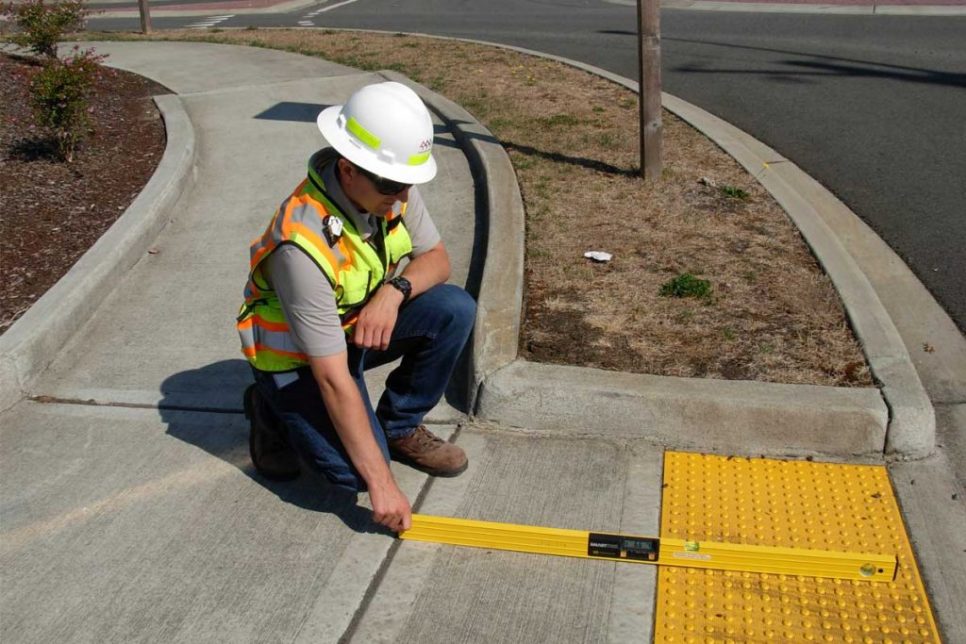
What Is an ADA Transition Plan?
An ADA Transition Plan is required of public entities that employ at least 50 persons. Its purpose is to set forth steps necessary to complete modifications identified through self-evaluation (those areas not covered by a previous plan) and to provide a schedule for completing the modifications. The plan must include the following minimum requirements:
- Identify physical obstacles in the public entity that limit accessibility
- Describe in detail the methods to make facilities accessible
- Specify the schedule for achieving compliance
- Indicate an official responsible for plan implementation
- Input from interested individuals and organizations
For those public entities with responsibility for streets, roads, or walkways, the ADA also requires that the Transition Plan includes a schedule for providing curb ramps where pedestrian routes meet roadways. Curb ramps received special consideration with a separate schedule for remediation. Similarly, the Joint Technical Assistance (JTA) document released by the FHWA and US DOJ requires curb ramps to be installed or replaced (if non-compliant with ADA standards) in conjunction with Alterations in the public right-of-way.
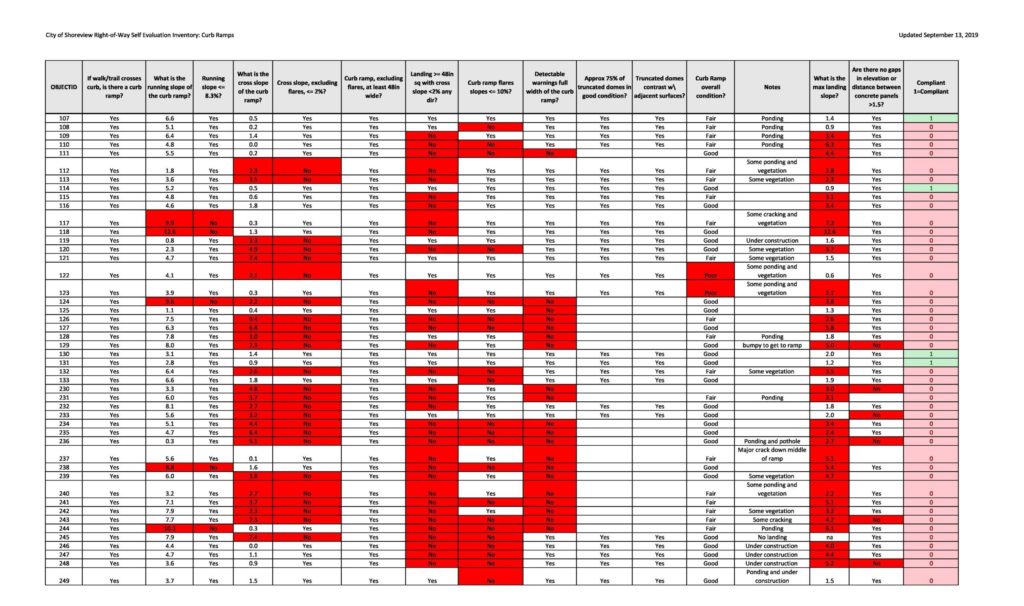
SRF has helped many public clients complete self-evaluations and ADA transition plans, including the City of Shoreview, City of Maple Grove, City of Hopkins, City of Cottage Grove, City of Moorhead, Washington County, and many others.
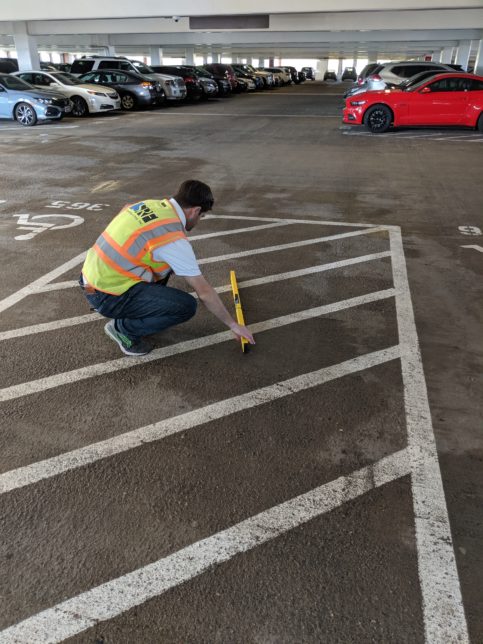
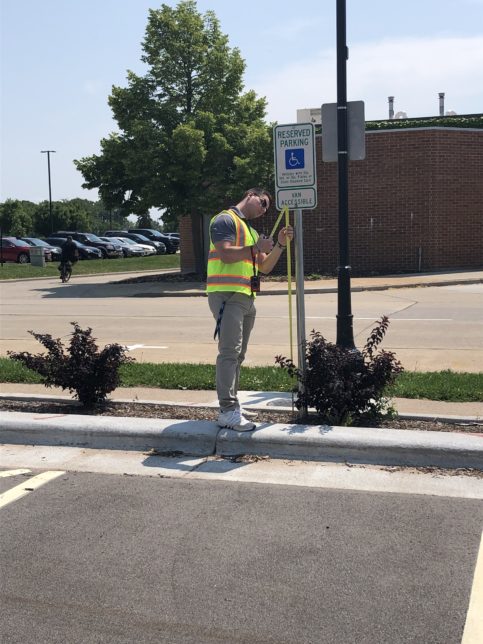
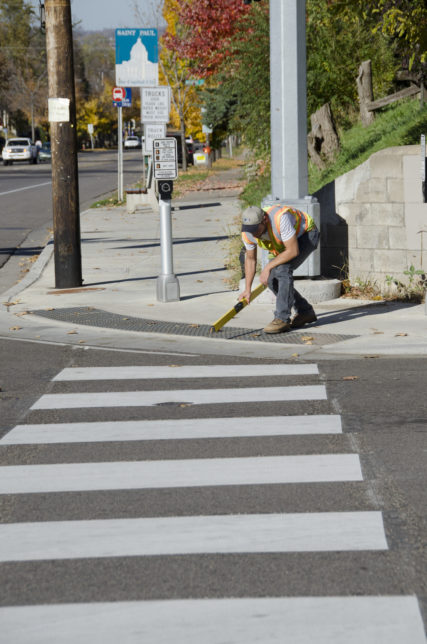
Legal Language
The actual legal language from the ADA legislation (§28 CFR Part 35) can be found here.
As a short summary of the legislation, public agencies are required to:
- Perform a Self Evaluation (§28 CFR 35.105)
- Evaluate current services, policies, and practices and make necessary modifications to meet requirements
- Provide an opportunity to interested persons to participate in self-evaluation process by submitting comments
- For those agencies with at least 50 employees: Maintain on file and make available for public inspection for at least 3 years following self-evaluation:
- Provide Notice (§28 CFR 35.106)
- Make information of this part available to applicants, participants, beneficiaries, and other interested persons
- For those agencies with at least 50 employees: Designate a Responsible Employee and Adopt Grievance Procedures (§28 CFR 35.107)
- For those agencies with at least 50 employees: Correct Accessibility Barriers of Existing Facilities (§28 CFR 35.150 subpart D)
- Develop a Transition Plan setting forth the steps necessary to complete changes required to achieve program accessibility
- Provide an opportunity to interested persons to participate in the development of a transition plan by submitting comments
- Make available a copy of the transition plan for public inspection
Meet SRF’s Accessibility Specialists

Brady Rutman, PE

